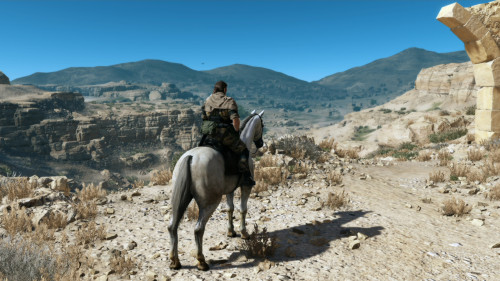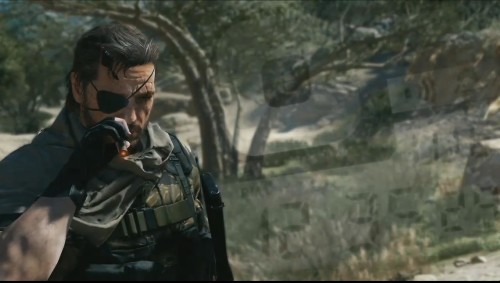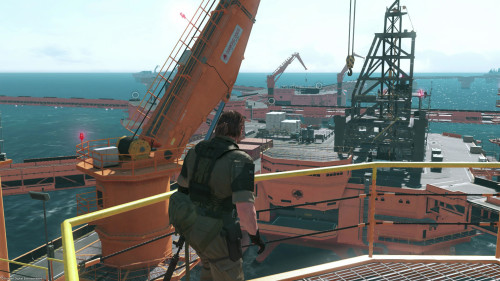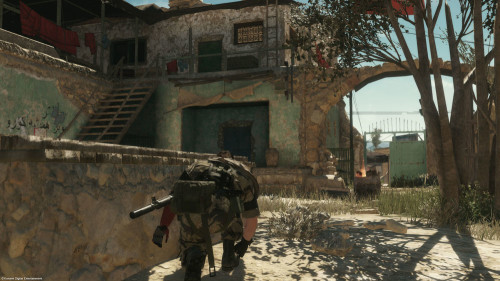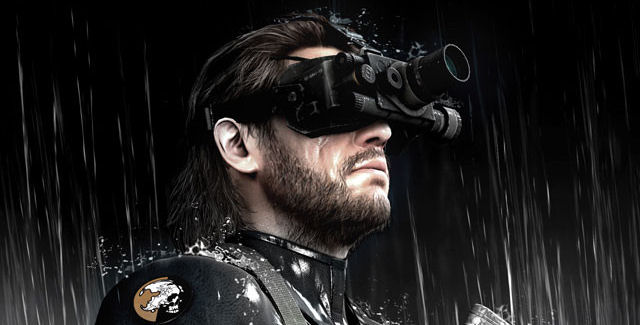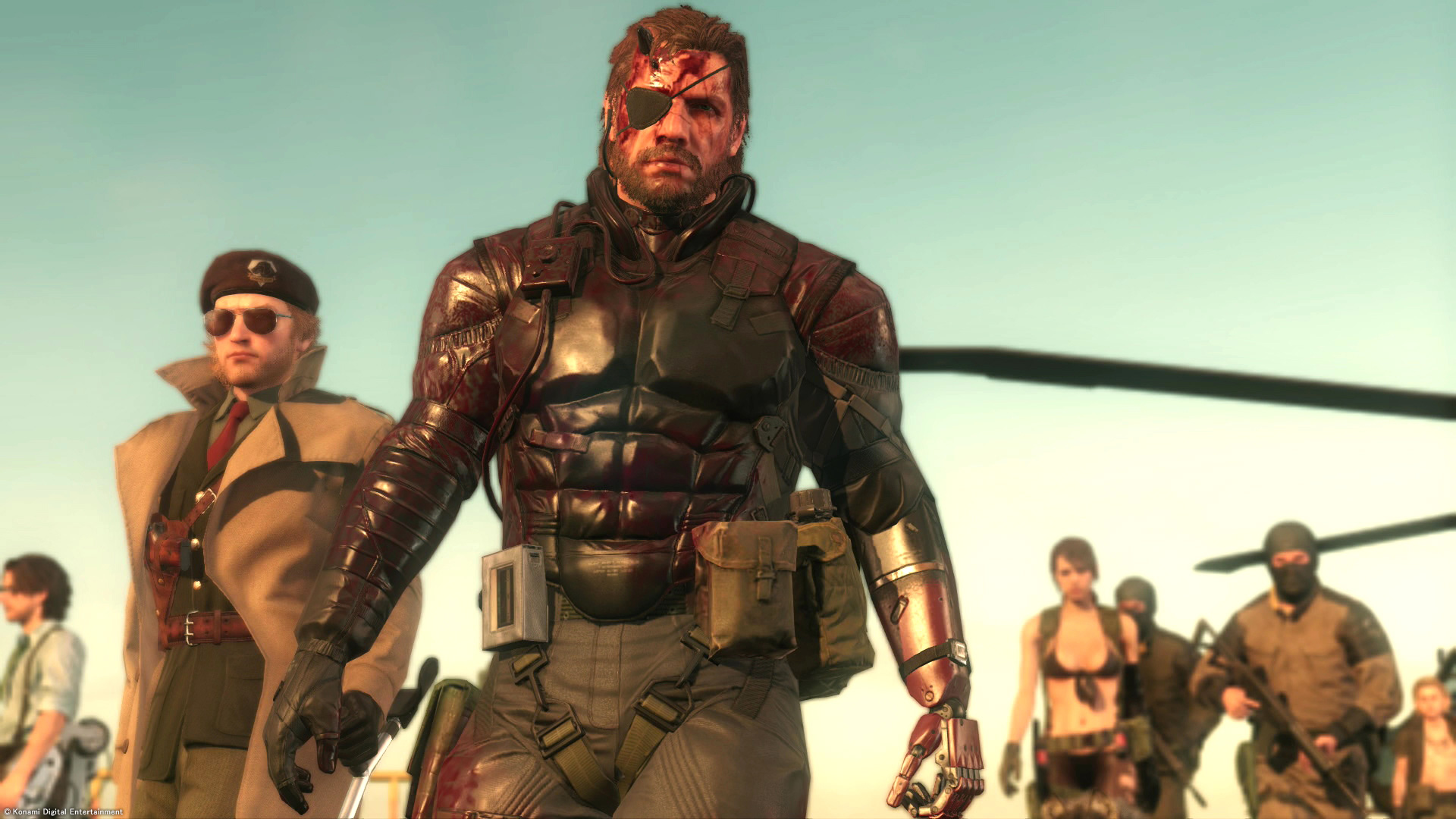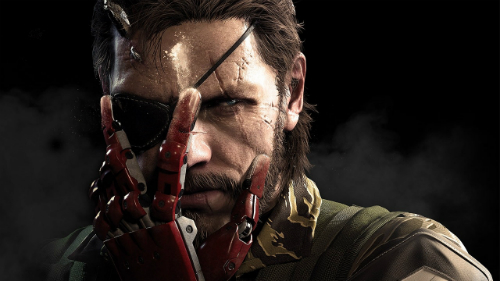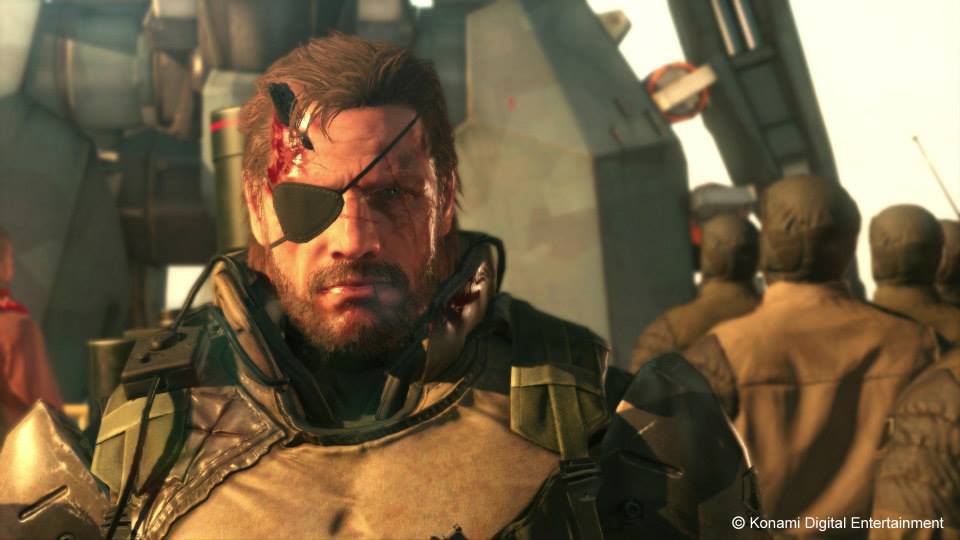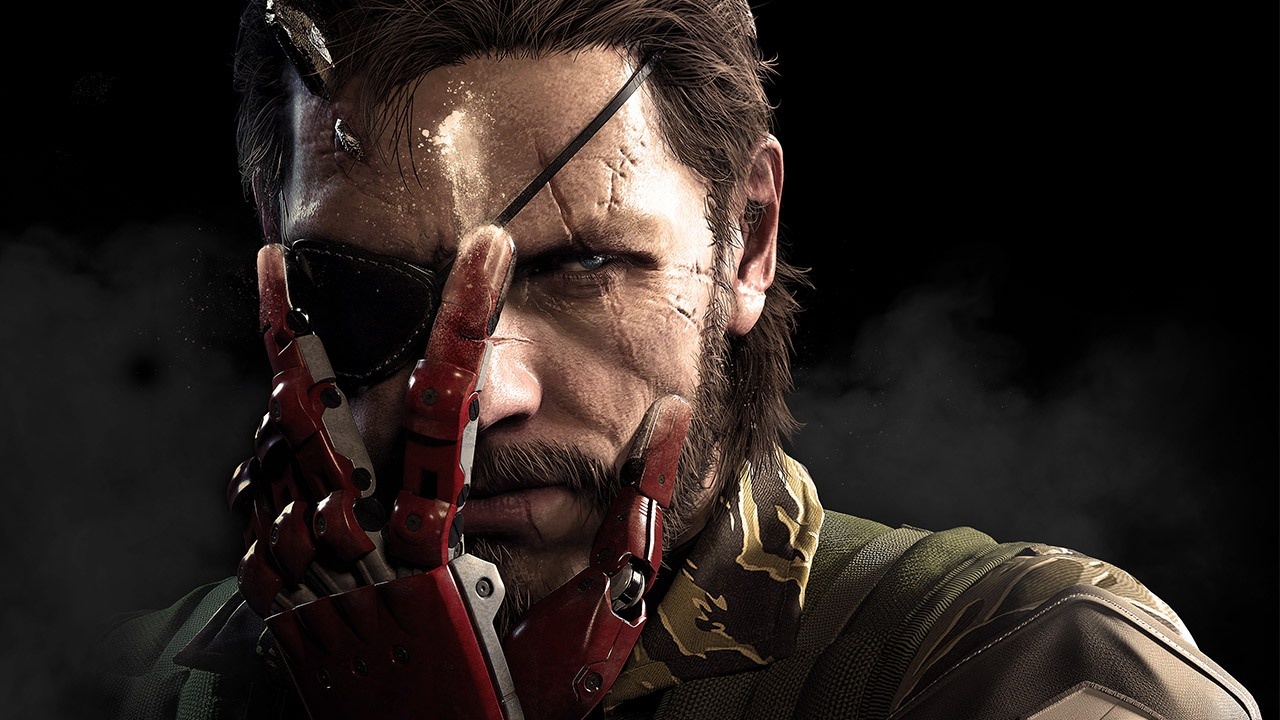
It’s not unusual for popular series to undergo transformation as creators grow as artists. It’s the natural evolution of creative work, designers setting themselves fresh goals and challenging their prior accomplishments. Change is healthy, at best inspiring fresh ideas, if at the cost of splintering expectations amongst fans. Metal Gear Solid V: The Phantom Pain is really no different. Let us not forget that Metal Gear is a 28 year old series, headed by a man and his team who today simply aren’t the same people they were even ten years ago.
Cutting right to the chase, the rigid linearity and scenario driven formula that defined the first four entries of the “Solid” series has taken a backseat. In the same way that Metal Gear Solid: Peace Walker shifted focus towards short, replayable missions and Monster Hunter-like co-operative elements aimed at the portable crowd, Metal Gear Solid V embraces a broader degree of agency in game systems, large areas of play space, and the longest stretches of uninterrupted interactivity that the series has ever seen. Truth be told, if frequent interruptions of codec conversations and lengthy cutscenes is absolutely integral to your enjoyment of Metal Gear Solid, if the series is wholly defined by the narrative, then The Phantom Pain is likely to be exactly what its title suggests for you: frustration from something no longer there, and a lingering itch that you cannot scratch.
Do not be mistaken; Metal Gear Solid V is still absolutely a “Metal Gear Solid” game, but from a distinctly refocused direction. And while this will innevitable result in lukewarm impressions from some fans, let change in this instance not undermine accomplishments in play. Truth be told, Metal Gear Solid V is not only undoubtedly one of the best playing games of the year, but an exceptionally impressive entry in the entire stealth genre.
My earliest feelings towards The Phantom Pain were surprisingly that of disappointment. Billed as an “open world”, and coming off hot sex like The Witcher 3: Wild Hunt, I treated Snake’s interaction with Afghanistan just as I would any other similarly open world from Bethesda, Rockstar, or CDPR; a world in which I continuously inhabit and explore. This simply isn’t true for Metal Gear Solid V, where the two open worlds are frankly sterile in dynamic events and devoid of unique discoveries. These are not worlds to explore, and treating them as such results in a deflating sense of emptiness. Readjust your perception towards treating these maps more like sandbox playgrounds utilised within structured missions and objectives and suddenly it all makes sense. Afghanistan and Africa, with their mixed topography and varying bases and camps, are simply playspaces with usefulness valued by how you choose to use them.
Highlights of play in previous entries challenged to make your way from A-to-B while avoiding or conquering everything in between. This is a series that has embraced emergent AI behaviour and level design that requires adaptive play. Playspace, zoning, and depth of interactivity limited by the hardware of the time. As these facets have ballooned in Metal Gear Solid V, the result is moment-to-moment play that is simply unmatched in the series. Certain missions will subject you to long stretches of uninterrupted sneaking past and through Soviet encampments littered across rough Afghanistan soil, culminating in the infiltration of a heavily guarded airbase. Salvation of a codec conversation or once-every-three-meters cutscene are nowhere to be found, most missions presenting themselves as a long, intense string of sequential hide-and-seeks. Meanwhile the broad range of equipment and tools to develop and deploy, along with the useful “buddy” system, present a borderline limitless depth to strategic options of which must be utilised on the fly during your campaign.
These lengthy stretches of adaptive play result in a brilliantly coherent experience, a true sensation of real mission development and investment, particularly when conditions change and adaptation is paramount to survival. One memorable mission had me seeking out several targets I’d been requested to eliminate, though had made a personal choice to fulton and recruit them instead. This required I take a non-lethal approach and, given I wished to accomplish this without fuss, infiltrate a handful of smaller camps undetected to avoid attention from patrolling tanks and a circling gunship. With a great degree of patience and careful, strategic play I managed to meet my personal goals and set a C4 trap for the tank by observing its patrol path. The final group of to-be-fultoned targets were located in an old mine, an area I had yet to visit, forcing me to patiently work my way to a vantage point and plot my infiltration. Densely packed with opponents, more open and challenging topography than previously encountered, coupled with the gunship…long story short, my plans fell through and I was quickly spotted. Despite my successful sneaking earlier, now I had enemy soldiers going wild, half searching for me and half firing at my buddy. All the while the bloody gunship had me right in its sights, following me as I ran from cover to cover, beading in and unleashing a torrent of bullets any time I was out in the open.
The excitement climaxed with me running for cover in a mine, realising this wouldn’t end unless I took out the gunship, and calling in a supply drop of the only anti-air weapon I had: a shitty, basic rocket launcher with no homing or lock-on capabilities. Once Mother Base had dropped it into the hotzone I bolted out of the cave in the brief gap between the gunship’s gunfire, traded my now useless silenced tranquilliser rifle for this ghetto rocket launcher, and in the span of only a handful of seconds whipped up the sights, aimed at the gunship just as it was rotating and spinning up its guns to shred me to pieces, and fired. Boom, direct hit. The gunship span out flaming into the trees, and with the greatest threat out of the way my buddy and I were able to clean up the area of opponents and complete the mission.
Purists would frown on such a disastrous result in stealth, despite its optimistic beginnings, but the experience in play was so coherent, developed, and dynamic that the mission arc from start to finish was utterly enthralling. An authentically nail biting, edge-of-your-seat and impressively lengthy mission arc highlighted not by the series’ trademark cutscenes and monologues, but purely in play and emergent game design. It’s in these moments of which there are plenty that Metal Gear Solid V is at its absolute best.
Where the package begins to struggle is in, perhaps most disappointingly, the areas most iconic towards the series. Along with what I personally feel was the studio wrestling with translating the rigid linearity of the series to an open world formula. More to the point, Metal Gear Solid V‘s narrative does not come together anywhere near as well as I would have liked. It’s not really a debate of less/more cinematics, but that long stretches of the story meander about, while the last third is padded with the most interesting content that really had no reason to be splintered into a “second chapter”. I don’t want to give anything away, but The Phantom Pain simply has an undercooked narrative; a villain who’s appearances are few and his motives underdeveloped, ideas and themes that come and go with varying levels of significance, sequences absent of emotional resonance and tight scripting, unnecessary unlock criteria for the “true” ending, and an entire plot arc that is outright abandoned and straight up unresolved.
Perhaps this is a consequence of Kojima Productions trying to find a way to balance more open, free-form map design along with replayable missions and chapter/episodic structure with the cinema heavy formula of old. Maybe they bit off a bit more than they could chew, running out of time and fumbling a bit to bring the blend of play and game design together with the narrative focus into a more coherent, paced experienced. And it’s not like many of the ideas are bad; it’s Hideo Kojima trademark crazy from time to time, and fragments of the narrative are thematically interesting. But even with the change in overall directional focus the storytelling really feels like it’s missing that complete spit-and-polish and sense of fulfilment and completion that the other titles, even at their worst, manage to uphold.
It’s impossible for me to go into a post-mortem analysis of specifics where the storytelling falters without spoiling chunks of narrative fans should witness for themselves, however even considering an understandably divisive response to how the story is told there’s undeniably tremendous room to improve the story as it is. It absolutely has its moments, but they’re few and far between, and to be perfectly honest while reminiscing over my 83 hours with The Phantom Pain very little from the story or cinematic presentation stands out fondly. It’s just too frequently unmemorable, and that is a striking difference from its predecessors.
What we’re left with is a really quite odd Metal Gear Solid adventure, one that consciously focuses on one half of what defines the series while deliberately downplaying the other. And, you know, that’s totally fine. Some fans will bemoan change, but like I said; change can bring fresh, inventive ideas to a tired old formula. And in play Metal Gear Solid V does exactly that. This is a Metal Gear Solid that embraces what you’ve come to know from the series in “stealth”, doubling down design of play and polishing it to a startling degree. Controls are tight and responsive, AI sensible and predictive, game systems reliable and rewarding, and the overall presentation of play clean and distinct. In the same way that simply playing a series like Dark Souls is delightful due to the work gone into the game systems themselves, so too are the absolute basics of interacting with Metal Gear Solid V through to the deepest strategic play. It feels absolutely brilliant in your hands, and if game systems dictating the scope and polish of interactivity are the “core” of any video game, then the core of Metal Gear Solid V is the series at its best.
But it’s all that stuff that exists outside that core, the exterior and supports, that struggle to meet the standard set by the foundations. A narrative that fails to satisfyingly develop its own themes and ideas, and rarely convincingly resonate in an emotional or thought provoking way. Chapter/episodic mission structure that at times seems a little at odds with the open world formula. The absence of memorable boss fights, sans maybe one or two. An open world that just isn’t very interesting to explore outside of mission objectives. Undeniably cut, unfinished content. And so on.
Metal Gear Solid V: The Phantom Pain shows its cracks the more time you spend with it, and as a Metal Gear project it’s arguably the one that stands out most as missing pieces of that whimsical something that defines the series. To me, it feels like a game that would have benefited from another six or more months in the cooker. But that’s neither here nor there because it is what it is, and in the same breath I can say with confidence that it’s also one of the best playing games of the year, and purely in terms of embracing tactical stealth a brilliant culmination of and send off to Hideo Kojima’s wild and wacky vision of the Metal Gear arc.
Deep, responsive, and highly polished stealth game design. An evolution of Metal Gear in play.
Unfinished, unsatisfying narrative. Odd mission structure.

